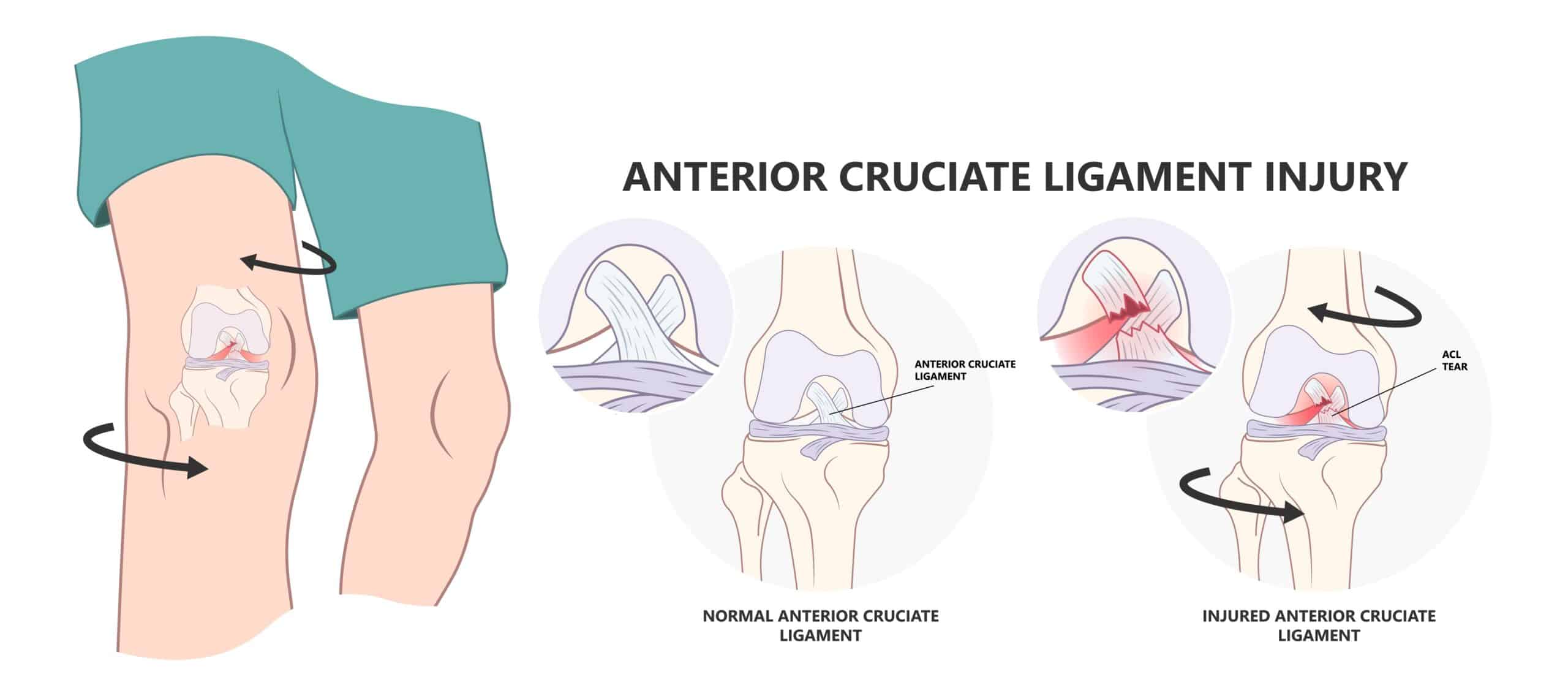
In many cases, and depending on the activity goal of the patient, major surgery can be avoided.
Conservative care treatments including RICE (Rest, Ice, Compression, Elevation), pain medication, physical therapy, knee braces and other external knee stabilizers are the mainstay treatments that most patients try. When those therapies fail, surgery is then often considered.
Why do some doctors not recommend ACL reconstruction?
Many orthopedists may not recommend ACL reconstruction because it is not realistic for the patient for various reasons. These recommendations may be made to patients who have an isolated ACL tear. These are ACL injuries that did not include meniscus damage, other ligament tearing, or cartilage tear.
- ACL reconstructions may also not be recommended to people who are not sport active or do not have physically demanding lines of work.
- Non-operative anterior cruciate ligament treatments may include physical therapy and exercise programs to strengthen the knee and restore function. However without an ACL, there will be instability. As part of the non-operative treatment, the physical therapist may focus on exercise for the patient that will address this instability. Some patients will also have knee braces designed especially if they want to have a somewhat confident knee function in sports.
In a January 2024 study (1), doctors administered PRP therapy within six weeks after ACL injury in patients who expressed the desire for an early return to sports through conservative care. After the treatment, patients wore a simple brace that limited deep flexion but placed no restrictions on weight bearing. Four months was the standard goal established for returning to pre-injury condition. The average patient age was 32.7 years and the average treatment was 2.8 PRP sessions.
MRI evaluations confirmed that ligament continuity was regained in all cases. All the patients returned to their pre-injury level in an average of 139.5 days, but there was one instance of re-rupture following the return to sports.
Stem Cell Therapy for ACL tears
Are stem cells an option to ACL reconstruction? Mesenchymal stem cells are injected into the area of the ACL tear. The theory is that the stem cells can deliver and help produce healing factors to repair damaged cells and stimulate tissue regeneration.
The idea of improvement to surgery is expressed in many patients we see for ACL tears and knee problems who are unfortunately on their second or even third ACL reconstruction surgery recommendation. They are weighing their options knowing already what a surgery and rehabilitation will be like. For them the appeal of surgery has lost some luster.
Free phone consultation
In our practice, bone marrow aspirate or bone marrow derived Stem Cell Therapy is a treatment for musculoskeletal disorders. We treat degenerative joint disease, degenerative disc disease of the spine, and tendon and ligament injury. With over 27 years of experience, Dr. Marc Darrow and his team are pioneers in regenerative treatments, offering expert insights and personalized care tailored to your needs.
Schedule a free phone consultation today and receive our exclusive Regenerative Medicine Stem Cell & PRP Quick Start Guide —a digital resource packed with:
- Insights into Stem Cell & PRP Therapy
- Research-backed treatments for chronic tendon injuries, joint pain, arthritis, and sports injuries
Take the first step toward a pain-free, active life today.
Call for a free phone consultation with our staff 800-300-9300
References
1 Hada S, Hada M, Yoshida K, Kaneko H, Saita Y, Kubota M, Ishijima M. Conservative Treatment Using Platelet-Rich Plasma for Acute Anterior Cruciate Ligament Injuries in Highly Active Patients: A Retrospective Survey. Cureus. 2024 Jan;16(1).






